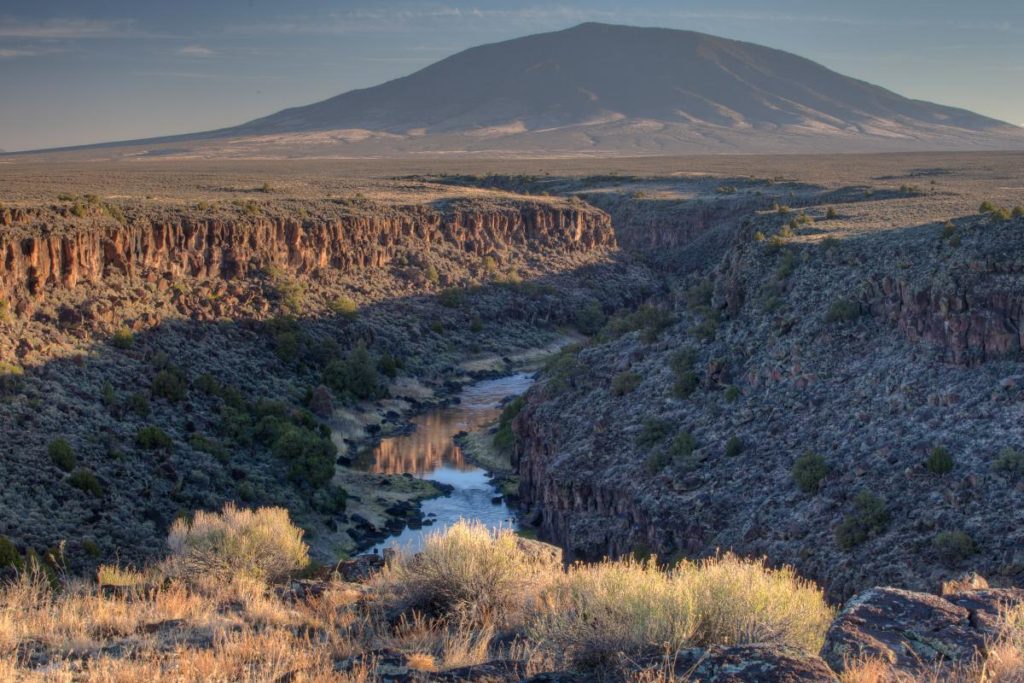
The last eel of the Rio Grande grows up lonely, brown and serpentine, a river with gills and a pulse swimming inside itself, spooning the river’s oxbows eager for siblings. What the eel doesn’t know could fill a book: that hydroelectric dams keep its kind from traveling upstream to spawn; that eels live elsewhere churning by the hundreds in slicktight knots; the taste of its own firm flesh smothered in soy sauce. The last eel stays ignorant, growing fat on cigarette butts and dreams of parents, growing heavy and slow feeding on the heavy metal hodgepodge downstream of the power plants, a bully coiled up in dark water only coming out to scare smaller fish into submission. And then one day it happens: the flossy flick of a line, the hook and tug before the drag. The eel fights, but its broad, tubed muscles are lazy from afternoon sleeps. It hasn’t run swiftly through a spring flood in years. Hands pull it easily from the water, helped along by the river saying ‘take it, I don’t want this anymore.’
From there the eel begins a backward migration. First in the bed of a pickup truck, sliding around the metal box with each hard right and left and nothing to breathe but a rectangle of sky too blue not seen through water. Then splashdown into a pond, a shallow depression in the earth where orange and white fish huddle in the corner and watch the eel with fear. Their gold scales are more beautiful than anything the eel has ever seen, more so even than the blue damselflies fluttering over the river in their mating twists. But before the eel can reach out and let the fish know they have nothing to fear from its dense and snaky body, it’s pulled from the water again and placed in an ice chest where, to the eel’s great relief, the world slows down for awhile.
When the eel wakes it’s as if time has exploded into reels of colored lights, whirligigs of sparks and big tents striped red and white. Crowds of people stop eyeheight to stare at the eel in an aquarium with a bubbler for oxygen and even less space than the pond. For 17 days the eel’s lanky body bunches like a rubber band inside the box, but the eel barely registers captivity, so hungry is it for the fair treats held by the children who smear the glass with sticky hands. Golden doughnuts and ice cream cones and tenderlooking meat rounds impaled on sticks and chewy taffy stuck between teeth. On the seventeenth day a girl who loves the water and all things swimming sticks her hand in the tank and the eel bites off her little finger, savoring the taste of blood and powdered sugar.
The eel is declared a ward of the state and khaki-suited agents deliver it to a roomy tank in the visitors’ center, just a few miles from the Rio Grande, where it will live another 18 months. Its skin hangs in heavy corrugated folds. Small sores open up like little mouths along its spine, and the metallic diet of the eel’s early years makes remembering difficult. The only scenery is hand-painted dioramas on the walls, of which the eel makes a daily critique. The acrylic river is stippled in a pattern all wrong for water. The height and drama of horizon, typically inaccessible to the eel without limbs that lift you up above the land, is flattened and amateur. But on days when the volunteers forget to clean the tank, the cloudy glass blurs the peaks and buttes, smashes their rust orange silhouettes together with the brownish green and greenish purple of the chaparral, and it speaks through the glass to another part of the eel deep inside that held onto the memories of previous animals.
Callum Angus has been a naturalist, a fishmonger, a reporter in Idaho, and an advocate for transgender youth. An alum of Mount Holyoke College, he now lives in Amherst, Massachusetts and teaches creative writing while finishing his MFA. His short stories, personal essays, and reviews have appeared or are forthcoming in The Offing, The Normal School, BuzzFeed, Queen Mob’s Tea House, Origins Journal, Rain Taxi and elsewhere. He is working on his first novel.
Photo courtesy of Flickr Creative Commons user mypubliclands.




